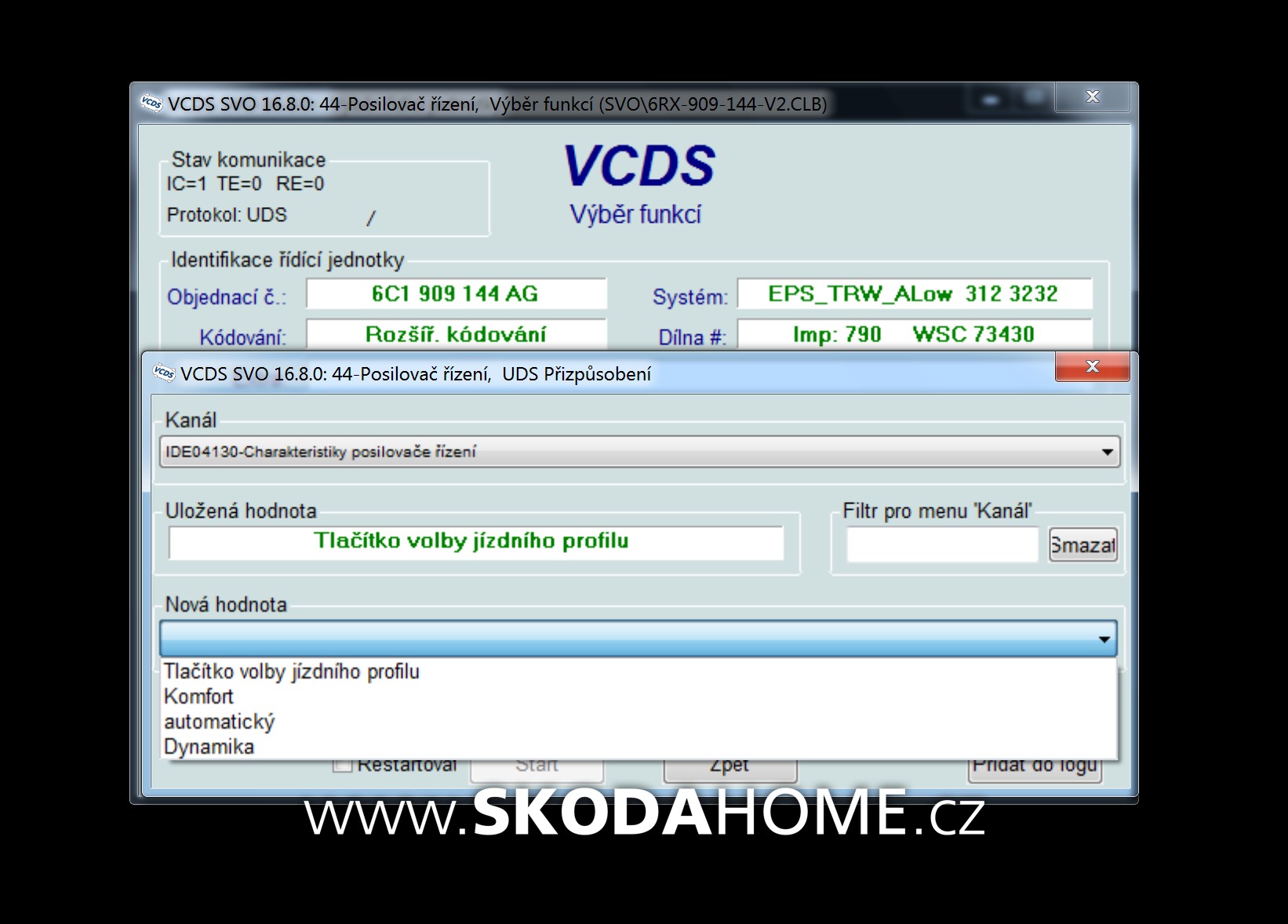This guide explores various VCDS coding options for the Skoda Rapid, specifically focusing on a 2016 Spaceback Scoutline with Elegance trim. We’ll delve into adaptations and coding changes possible through a VAG diagnostic tool, providing insights into functionalities you might not know existed.
Steering Assistance Adjustments with VCDS
Accessing Module 44 (Steering Assistance) within VCDS allows for customization of the steering feel.
Changing Steering Stiffness: Navigate to Adaptation -> “Steering Characteristics.” Here, you can select between “Comfort,” “Automatic,” and “Dynamic” modes to adjust steering response. Each setting offers a different level of assistance and feedback, allowing you to tailor the driving experience to your preference.
Activating Steering Assistance without Engine Running: Within the same module, find the Adaptation channel for “Activate Steering Assist without Engine Running.” Toggle this setting “On” or “Off” to enable or disable power steering functionality when the engine is off. This can be useful for maneuvering in tight spaces.
ABS Brakes and Hill Hold Assist Coding
Module 03 (ABS Brakes) offers coding possibilities related to driver assistance features.
Hill Hold Control (HHC): Access the Long Coding Helper within Module 03 and locate Byte 16. Bit 0 controls the Hill Hold Assist (HHC) functionality. You can enable or disable HHC here. Furthermore, in Adaptation channel “Hill_Start_Assist,” you can fine-tune the brake hold duration by selecting “Fast,” “Normal,” or “Slow” settings.
Central Electrics (Module 09) Coding Customizations
Module 09 (Central Electrics) offers a wide range of coding options to personalize various vehicle settings.
Keyless Entry System (KESSY): Byte 1, Bit 0 in the Long Coding Helper enables or disables the Keyless Entry System (KESSY), if your vehicle is equipped with PR-413/417.
Instrument Cluster (Module 17) Coding Options
Module 17 (Instrument Cluster) allows for customization of the dashboard display and warning settings. Using the Long Coding Helper, you can modify several features.
Distance Pulse and Country Settings: Byte 0 controls the distance pulse (Bits 0-3) and country settings (Bits 4-7) for the instrument cluster.
Warning Indicators and Multifunction Display: Byte 1 encompasses various warning indicators, such as brake pad wear (Bit 0), seatbelt warning (Bit 1), and washer fluid level warning (Bit 2). Bit 3 activates the multifunction display, potentially enabling features like a stopwatch within the Maxidot system. Bit 4 controls the “Vehicle – Outline Illustration” displaying either a wagon/kombi.
Tire Pressure Monitoring, Personalization, and Vehicle Type: Byte 2 manages Tire Pressure Monitoring (TPMS) activation (Bit 0), personalization options (Bit 1), vehicle type settings (Bits 3-4), and gear shift recommendations for fuel efficiency (Bit 5).
Fuel Tank Characteristics, Parking Assistance, and Speed Limiter: Byte 3 allows for adjusting fuel tank characteristics (Bits 0-2), activating Parking Assist Version 3 (Bit 3), and enabling the speed limiter function (Bit 4).
This guide covers several key VCDS coding options for the Skoda Rapid. Remember to proceed with caution when modifying your vehicle’s settings and consult reputable sources for detailed instructions and potential risks before implementing any changes. Further exploration of VCDS functionalities can reveal even more customization possibilities for your Skoda Rapid.

